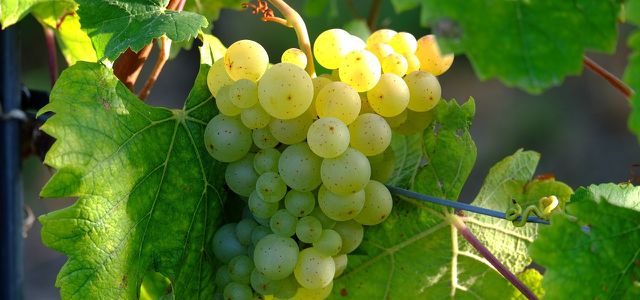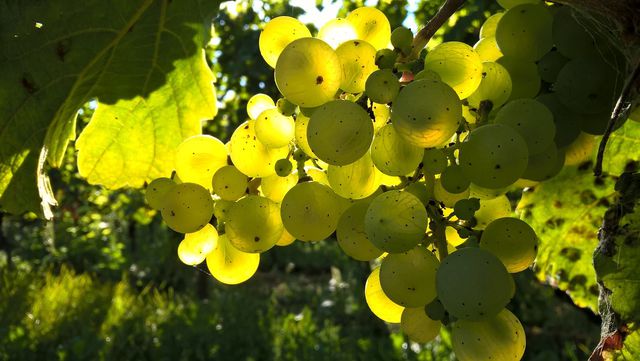
Growing grapes requires a lot of patience and dedication – but it’s worth it. We’ll show you how to plant your own grapes and what to keep in mind.
Contents
Planting grapes in your own garden
Having your own grapevine has many advantages: Not only can you beautify the facade of your house, but you can also harvest your own grapes, guaranteed not to contain pesticides. The climbing plant also thrives in the home garden under the right conditions. In order for the cultivation to succeed, you should consider a few points.
The right location for grapes

First, it is important that you choose the right location for your grapes.
Vine is a climbing plant. So it is advisable to plant it against a house wall, fence or wall. Unlike row planting in large vineyards, the vine can then spread far and bear more fruit – and besides, a house wall covered with grapes is a real eye-catcher.
A full sun and sheltered location is also important. The more sun the grapes get, the sweeter they taste later. A south-facing site is ideal.
The soil in which you plant your vine should not be too stony and chalky, but rather loose. This way you will prevent liquid from accumulating and your plant from being attacked by fungal diseases.
When planting, dig a hole about 40-50 cm deep and insert the vine. Then cover the hole with soil again, without pressing it too tightly. If your vine is to be placed against a house wall, leave about 20 cm of space between it and the wall so that the roots have enough room to spread.
For the selection of a suitable seedling, it is best to contact a regional vine or tree nursery – there you will get the best advice. For private cultivation, container vines are most suitable, as they can be planted all year round.
Planting grapes: Tips for care
Unlike wild vines, cultivated vines are about being able to harvest many and delicious grapes. Therefore, you should take good care of your vine plant.
Freshly planted vines should be watered vigorously once a week. Water vines planted against house walls especially often, as they receive less rainwater. It is not until the second year that vines can withstand extended periods of drought.
In the beginning, it is recommended to let your vine grow with one main shoot and cut back smaller shoots. This will allow a strong trunk to develop.
The most important part of vine care is regular pruning: this allows you to determine the growth and shape of the plant and, above all, to promote the grape harvest. When you prune a shoot, you should always leave about 2 cm behind the last bud to prevent it from drying out.
Because of the frequent pruning, grapes need a nutrient-rich soil, so fertilize your vine regularly. An organic fertilizer is best for this purpose. Depending on your needs, you can also enrich the soil with individual nutrients: You can recognize a magnesium deficiency in grapes, for example, by yellowed leaves.
Vines are quite susceptible to disease. Powdery mildew is particularly common and is manifested by dried grapes and spots on the leaves, which eventually fall off. Before resorting to chemical remedies, you can first remove the infested leaves, making the vine more permeable to light and air. In addition, spraying with garlic broth is said to have a preventive effect.
Grapes: how to harvest successfully
If the vine feels comfortable in your garden, you can harvest the first grapes from the second or third year of standing, depending on the variety.
- The time of harvest depends on the variety and weather conditions. As a rule, the first grapes can be harvested from the end of August. You can tell that the vine is ready for harvesting by the color of the grapes (depending on the variety) and the woody stem.
- To make the grapes ripen faster, you can cut off larger leaves that cover the vines. This way the grapes get more sunlight. You can also remove smaller, underdeveloped grapes to leave more energy for the remaining grapes.
- The “Blauer Muskateller” variety is particularly popular for garden cultivation, as it is comparatively resistant to mildew and has few seeds. If you prefer a white grape, the variety “Palatina” is recommended, which is also quite resistant to fungus and has a fruity-sweet taste.
- You can either eat the harvested grapes immediately or preserve them by processing them into juice, wine or raisins.

